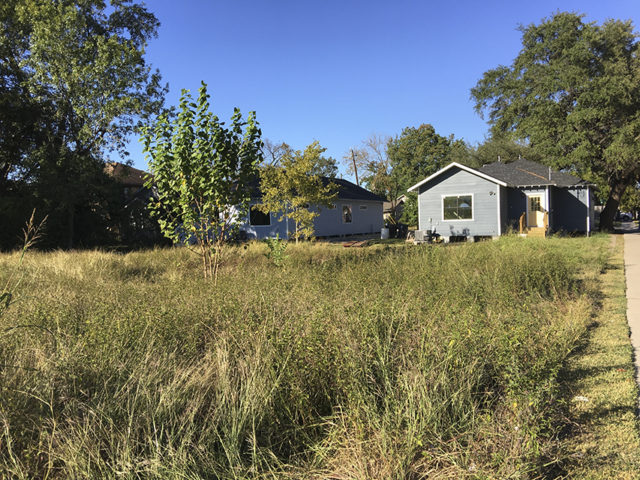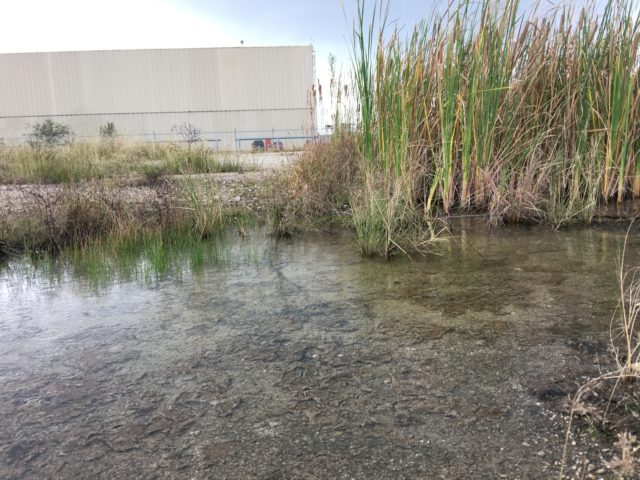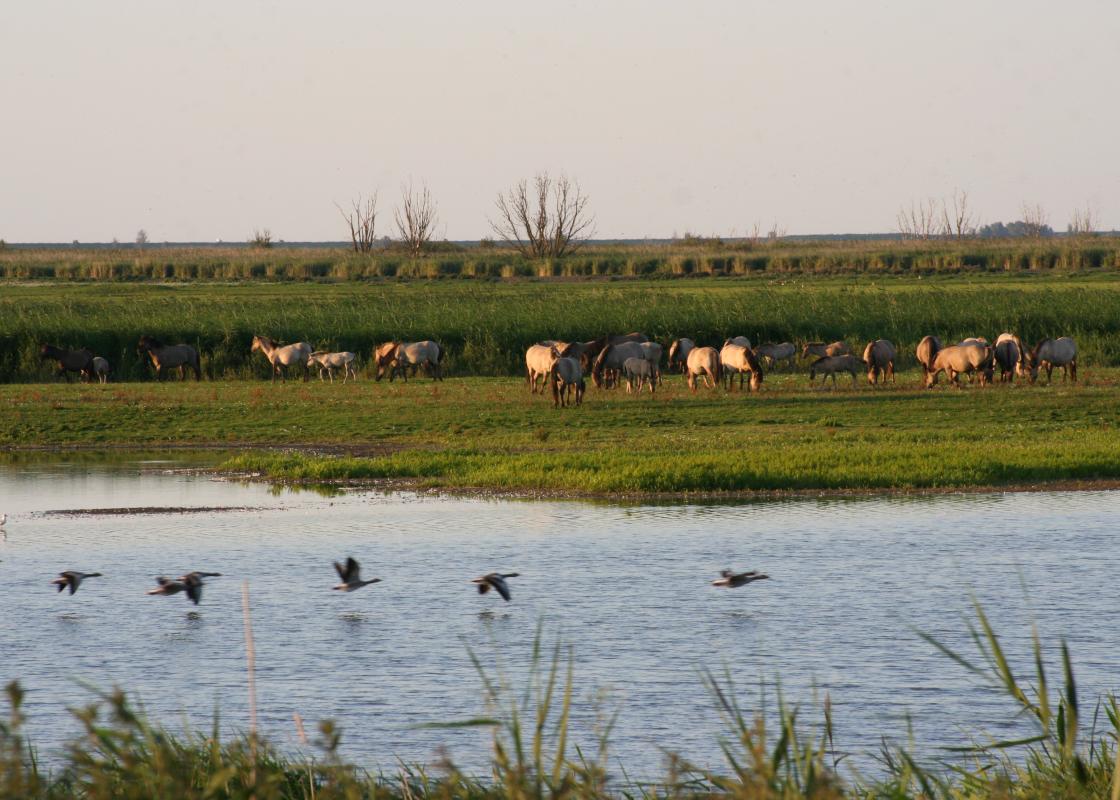Follow OffCite's Synthetic Nature series that supplements the forthcoming issue of Cite (99). Use the hashtag #SyntheticNature to view related content on Twitter, Instagram, and Facebook.
Allyn West: When we think about “nature,” you argue, we tend to think about “pristine” landscapes ostensibly free from human interference or intervention. You call this “the Yellowstone model,” in which a site is protected from “all human use” --- except tourism, of course. But you argue, finally, that “the cult of pristine wilderness” is both culturally and ecologically harmful, because it leads to there being “only two possible future states for most ecosystems: perpetual weeding and perpetual watching, or total failure.” What’s a more productive way, then, to think of “nature”?
Emma Marris: First of all, I should point out that the closer people are to nature, the more nuanced their view tends to be. Working conservationists and serious outdoors-people know that there aren’t many places that are untouched by human influence. But for many people --- including myself when I was younger --- the touch of humans tends to make spaces seem very much less natural. (I didn’t realize then how much intensive management places like Yellowstone require to keep them looking so natural!) I think this is dangerous because as the population grows and the climate changes, it means fewer and fewer places will “count” as nature --- and fewer and fewer people will have the means and time to spend time in those places. Nature will become a luxury good for elites and the rest of us will just check out.
I think we should expand our definition of "nature." Yellowstone and other highly managed gems still count, of course, but so do the edges of a farmer’s field or a second-growth forest, or a city park. Nature is defined by the presence of multiple species interacting --- not by whether humans have influenced it.
 Doesn't this count as "nature"? Intermediate stage of succession observed in an abandoned lot on Dumble Road. Photo: Taylor McNeill.
Doesn't this count as "nature"? Intermediate stage of succession observed in an abandoned lot on Dumble Road. Photo: Taylor McNeill.
West: A lot of the intellectual work you’re up to in Rambunctious Garden is a dismantling of binaries. There remains, for example, a stigma associated with so-called exotic, nonnative, or invasive species. But you argue convincingly that exotics might very well become “the keystone species of the future’s ecosystems,” leading to what are known as “novel ecosystems.” What do you believe is the ideal relationship between cities and novel ecosystems? Furthermore, how would you suggest that cities study, design, and manage novel ecosystems?
Marris: I am fascinated by novel ecosystems, because they really are nature itself solving the problems we throw at it, rather than us swooping in and trying to fix our messes. Novel ecosystems may not look pretty to us, with our sense of beautiful bound up with what we are used to or what is native, but they are thrillingly robust and we can learn so much from watching them evolve and change as the planet changes.
In cities, there is nothing wrong with designating certain spaces as places for native species. These places are educationally valuable, culturally valuable, and of course they can be very beautiful. They connect us to the place’s past. But they will be increasingly resource-intensive to maintain. Nonnative species are going to continue to knock at the door, and as the climate changes both through global warming and urban heat island effects, native species may have a harder time thriving. So let’s have these spaces and love them, but let’s be realistic about how extensive they can be.
We should also have formal, manicured or more wild-style gardens in a city, spaces where the human touch is centered and celebrated.
And we should also let some urban spaces simply “go wild” and not fiddle with them. These will be the novel ecosystems, and they might offend the aesthetic and old-school ecological sensibilities of some, but they are so fascinating and so educational. I also think that all people deserve access to self-willed nature—to wilderness. For those who aren’t about to plan a 10-day backpacking trip through a designated wilderness area, these can be their spaces.
Urban wilderness is a challenge. It tends to be used informally by homeless and teenagers, and that can freak people out. It can become habitat for unwanted rodents, and fears about diseases like hantavirus and lyme disease are legitimate. But I think that with some creative landscaping around the edges, with a few paths and the appropriate signage, urban wildernesses could become a new type of greenspace that is both cheap and forward-looking. The wild success of the High Line in Manhattan suggests we are ready to start thinking along these lines. The High Line began as a spontaneous ecosystem on an elevated railway. Even though that was mostly removed and replaced with intentional plantings, it was that wildness that first captured people’s imagination, and many visitors today are under the impression that what they are looking at is a feral ecosystem.
 A novel ecosystem in Eastwood: an aquatic microclimate at the periphery of an industrial facility. Bulrush, Typha latifolia, native to North and South America, emerges, thriving in the accumulated stormwater. Photo: Taylor McNeill.
A novel ecosystem in Eastwood: an aquatic microclimate at the periphery of an industrial facility. Bulrush, Typha latifolia, native to North and South America, emerges, thriving in the accumulated stormwater. Photo: Taylor McNeill.
West: It seems to me that one way of supplementing “novel ecosystems” is the practice you discuss that Michael Rosenzweig calls “reconciliation ecology,” where habitats are “invented, established, and maintained” in the interstitial spaces of cities. On the banks of the Duwamish River in Seattle, you write, you saw platforms built for osprey, which quickly got the hint. In Helsinki, researcher Ilkka Hanski stopped mowing his 16,000-square-foot lawn and found, after several years, 375 species of animals and plants --- including two endangered insects. Why are “rewilding” gestures like these important for cities?
Marris: The key message I am trying to spread is that there is not one kind of nature, nor one way to “save” or manage it, nor one way to interact with it. Urban spaces should contain all the flavors of nature, from the stylized garden to the restored native landscape to the wild and free novel ecosystem. And urbanites should be allowed to interact in a range of ways, from the more traditional walking, jogging, and quiet contemplation, to foraging and fishing, making forts and climbing trees, collecting seed and participating in management.
Nature is “for” all the Earth’s species, but urban nature is more specifically for us humans. Humans need not just generic “greenspace” but wildness and tactile interaction with nature. Seeing a hawk or a coyote in the city reminds us that coexistence is possible, that our fates are interwoven with the rest of Earth’s species, and that natural beauty and surprise are something that everyone deserves to experience every day.
West: Many of the landscapes you discuss in Rambunctious Garden aren’t in urban areas. The Oostvaardersplassen, for example, is 30 minutes by car outside of Amsterdam.
In Houston, some of our most important landscapes --- the volatile riparian corridor of Buffalo Bayou and the serene prairie and post oak savannah of the Arboretum at Memorial Park, for example --- are inside the city, completely surrounded by development, by infrastructure. Though some have advocated for “perpetual weeding and perpetual watching” at these landscapes, both have been subjected to a more hands-on approach --- rebuilding the bayou’s banks, replanting, removing trees and other vegetation, and performing ongoing maintenance. What might you say to those Houstonians who might have wanted Buffalo Bayou or Memorial Park to stay “natural”?
Marris: Greg Aplet at the Wilderness Society has a great conceptual framework for managing large natural areas. He calls it the portfolio approach, and it entails managing big chunks of the landscape in three different ways: classical restoration (native focus, historical baseline), innovation (striving for resiliency, using natives and non-natives, being experimental) and observation (doing nothing and letting nature figure it out). Only by doing all three can we best ensure that species are saved, that other uses and values are respected, and that if one strategy fails to meet our goals, the others will pick up the slack. I think the same portfolio approach can work in urban settings. Restoration is expensive but culturally worthy, innovation is appropriate for a humanized, modern space, and observation is inexpensive and allows urbanites access to the soul food that is wilderness.
There is no one nature, and there is no one right answer. Expanding our categories and experimenting with new ways of interacting with urban nature will bring us pleasure, enhanced community interaction, greater health, and greater knowledge.
Taylor McNeill contributed to this interview. He is a landscape architect with Asakura Robinson in Houston. Emma Marris is a writer based in Oregon. Her book, Rambunctious Garden, was published in 2011. Her TED Talk on this subject, "Nature is everywhere — we just need to learn to see it," has been viewed almost 850,000 times.










